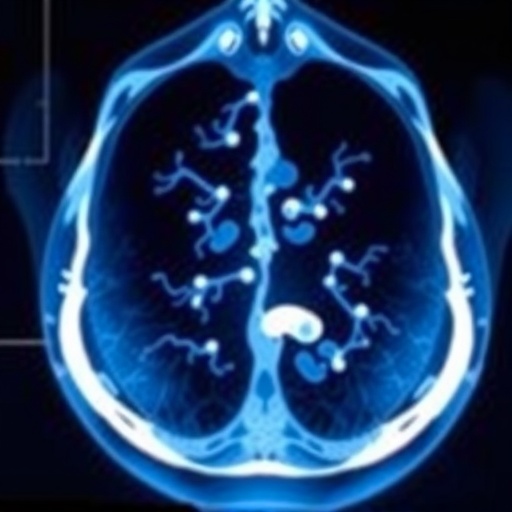In a groundbreaking commentary piece in the esteemed publication Pediatric Radiology, a collaborative team of experts, including Noor, Amiruddin, and Belachew, delves into the evolving landscape of pediatric radiology education and its global implications. The piece focuses on the institution’s observership program, which is designed to enhance educational practices in the field of pediatric radiology. The authors share insights into the structure, goals, and outcomes of this program, highlighting its importance in preparing future radiologists to meet the challenges of a rapidly changing medical environment.
The observership program serves as a pivotal part of pediatric radiology training, bridging the gap between theoretical knowledge and practical skills. Traditionally, medical education has relied heavily on lectures and textbooks. However, as healthcare technology and the need for specialized care evolve, hands-on experience becomes increasingly vital. The authors express that this program not only aids in the transition from student to practitioner but also addresses the global disparity in access to quality pediatric radiology education.
The commentary emphasizes the need for global collaboration in medical education, particularly in subspecialties like pediatric radiology, where the stakes are exceptionally high given the vulnerability of young patients. The program has attracted participants from diverse backgrounds, fostering a rich exchange of ideas and techniques. This cross-cultural dialogue is instrumental in creating a more inclusive and comprehensive training approach that transcends geographical barriers.
One significant aspect highlighted by the authors is the integration of advanced imaging technologies into the training curriculum. As the field of radiology becomes increasingly reliant on digital imaging and machine learning, the ability to interpret complex data sets becomes a critical skill. By embedding these elements into the observership, participants emerge not only proficient in traditional radiology practices but also well-versed in the latest technological advancements. This dual focus prepares them to tackle contemporary challenges in pediatric healthcare.
Additionally, the commentary sheds light on the ethical considerations intrinsic to pediatric radiology education. The authors stress the importance of instilling a strong ethical framework within trainees. This involves not just understanding the technical aspects of imaging but also being aware of the implications their findings have on young patients and their families. As such, ethical training is woven into the fabric of the observership program, ensuring that future practitioners approach radiological interpretations with sensitivity and care.
Another key benefit of the observership program is its potential to improve communication skills among budding radiologists. Effective communication between medical professionals and families is crucial for the holistic care of pediatric patients. The program incorporates workshops designed to better prepare participants for sharing complex information with parents and caregivers. This skill not only enhances patient experience but also ensures better adherence to treatment protocols.
The responses from past participants serve as a powerful testament to the program’s effectiveness. Graduates have reported increased confidence in their diagnostic abilities and a clearer understanding of their role within the wider medical team. Many have credited the observership for their improved capability to collaborate cross-disciplinarily, which is increasingly important in today’s healthcare landscape where interdisciplinary teamwork is paramount to patient safety and outcomes.
In exploring the future of pediatric radiology education, the authors of the commentary advocate for sustained investment in such programs. As nations strive to enhance their healthcare systems, the need for well-trained pediatric radiologists who can provide high-quality care is undeniable. The authors call for policymakers to recognize the value of educational initiatives like the observership, not only as a means of developing individual practitioners but as a critical component of broader public health strategy.
The article concludes with a powerful call to action for the global medical community. It urges stakeholders to prioritize educational programs, share resources, and foster collaborative relationships that can lead to greater advancements in pediatric radiology. This unified approach, grounded in shared experiences, can help dismantle existing inequalities in access to healthcare education — a goal that aligns with the universal commitment to improving health outcomes for children everywhere.
The commentary by Noor, Amiruddin, Belachew, and their colleagues encapsulates a clear vision: to transcend traditional education methodologies in radiology and adapt to a dynamic healthcare environment. This dual approach of fostering technological prowess while emphasizing ethical considerations and effective communication sets a new standard in pediatric radiology education. Such initiatives, they argue, will not only benefit individual trainees but will ultimately contribute to shaping a future of more competent, empathetic healthcare professionals ready to confront the challenges faced in pediatric care worldwide.
The authors have effectively advocated for a holistic educational framework that balances technical skill acquisition with ethical practice and interpersonal communication. They envision a future where pediatric radiologists not only excel in their diagnostic capabilities but also engage meaningfully with patients and families, transforming the pediatric healthcare landscape for the better.
As this commentary gains traction within the medical community, it stands as a beacon of hope for educators, practitioners, and policymakers alike, illustrating the profound impact that a well-rounded approach to education can have in the mission to improve health outcomes for children globally. Emphasizing the urgency of collaboration in educational initiatives, this piece sets the stage for a concerted global effort to advance pediatric radiology into a new era.
The innovative observership program serves not as an isolated educational endeavor but as part of a larger movement towards harmonizing pediatric radiology education across borders. The authors’ insights and recommendations could very well pave the way for transformative changes, ensuring that the next generation of pediatric radiologists is equipped not just with knowledge, but with the compassion and understanding required to make a genuine difference in their patients’ lives.
As we step into this new chapter of pediatric care, the importance of preparatory programs like the observership cannot be overstated. By fostering dialogue, advancing technological know-how, and nurturing ethical sensibilities, the medical community can rise to meet the unique challenges faced in pediatric radiology, ultimately striving toward a brighter future for children and families everywhere.
Subject of Research: Global pediatric radiology education and observership programs.
Article Title: Global pediatric radiology education—a commentary on our observership program.
Article References:
Noor, A., Amiruddin, R., Belachew, B. et al. Global pediatric radiology education—a commentary on our observership program.
Pediatr Radiol (2025). https://doi.org/10.1007/s00247-025-06385-1
Image Credits: AI Generated
DOI: https://doi.org/10.1007/s00247-025-06385-1
Keywords: pediatric radiology, education, observership, global collaboration, healthcare, ethical training, imaging technologies.
Tags: addressing disparities in medical educationbridging theoretical knowledge and clinical practiceenhancing practical skills in radiologyevolving landscape of pediatric healthcareglobal collaboration in healthcare educationhands-on experience in radiologyinnovative educational practices in medicineinsights from pediatric radiology expertsobservership program in medical trainingpediatric radiology educationpreparing future pediatric radiologistsspecialized care for young patients





